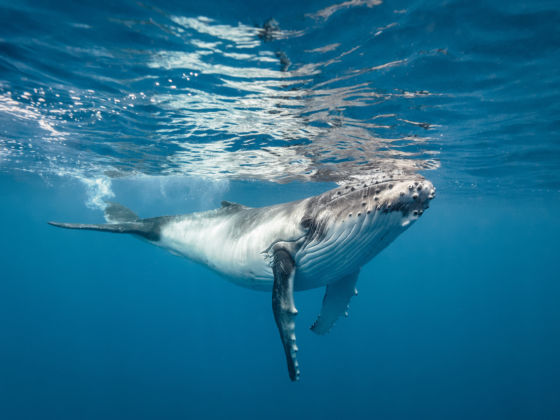Overanalyzing song lyrics is likely a fruitless proposition, but when it comes to whale songs, it can actually yield a wealth of information. According to a study published in The Royal Society Open Science, the songs of male humpback whales can tell us the migratory routes used by those whales, and the songs change as they meet whales from different regions. Clare Owen, a marine scientist and Royal Society University Research Fellow at the University of St Andrews, recorded the songs of 52 humpback whales in the South Pacific, from eastern Australia to French Polynesia, with some pretty fascinating results.


The Songs of Humpback Whales Tell Us Where They’ve Traveled
After recording the mammals, they sorted their songs into three categories, each of which occurred in a specific location — Song Type 1 was the song most heard in the Cook Islands and French Polynesia; Song Type 2 was the one most found in New Caledonia, Tonga, and Niue; Song Type 3 is the dominant one in eastern Australia. The scientific team later compared those songs to the ones recorded off 39 males at the Kermadec Islands, a migratory crossroad and pit stop for humpback whales. From there, they were able to determine which whale came from where, based on the song similarities.
“The migration patterns of humpback whales are written into their songs,” Owen explained in the study. The analysis also suggests that the Kermadec Islands were also a spot of song exchange, where whales from different populations and coming from different wintering grounds communicate and learn from each other as they meet.
All that to say that upon meeting new whales, humpbacks share tales of their journeys and learn from others’ migrations — an act of cultural transmission, not unlike what we do when we meet new travelers.